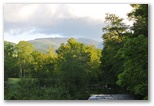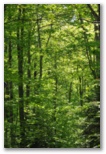NH Visit Bird List 5/30-6/6/2009
During a visit with my parents in Jackson for the week of May 30 through June 30, 2009 I managed to find
some time to get out in the nearby woods birdwatching and attempting to photograph birds with my 70-300mm
zoom lens. Thanks to a trip back east a couple of years ago, I remembered most of the songs so was able to
identify most of the birds I saw and heard. I spent a total of more than 30 hours in the woods, distributed
over 7 outings - 3 around our property, 2 up on Black Mountain behind Overlook, a hike up Doublehead and
a longer loop hike up the Glen Boulder trail and down Boott Spur on Mt Washington. Though showers were
forecast for most of the week the weather turned out to be sunny and bright most of the time, good for
taking pictures in the woods with my relatively slow lens. I know the photos aren't great but they do perhaps
convey a more accurate impression of the actual glimpses of the birds that you get in the field than more
professional images do.
Altogether I saw or heard a total of 76 species.
Altogether I saw or heard a total of 76 species.
SpeciesNotes
Canada GooseFlocks of 20-50 flew overhead occasionally
Ruffed GrouseTwice flushed in mixed woods
Wild TurkeyTwo on ski trails below the knoll
Turkey VultureIndividuals soaring over our property and below South Doublehead. Two crows harassed one over Tracy's. In photos it looked distressed.
Broad-winged HawkCalling in woods, soaring over Black and Doublehead
Red-tailed HawkOne soared down Pinkham Notch while I was at Glen Boulder
Peregrine FalconAdult circled over house, soared off to N while Eric, John and I were talking out on the lawn. Id confirmed by photos. Another sighting over the house was tentative.
Mourning DoveA few seen most outings. Eric has a small flock visiting his feeder.
Chimney SwiftSeveral over our fields one time
Ruby-throated HummingbirdOur property, and especially around the feeder at the corner of the porch
Belted KingfisherOne at pond near Doublehead trailhead
Yellow-bellied SapsuckerHeard twice in woods on our property
Downy WoodpeckerOne in brush and small trees along river by lower field
Hairy WoodpeckerSeen on Washington and Doublehead, where I found a pair nesting in a birch tree about half-way up the mountain. Both male and female perched near me making keek calls but they continued to carry food into the nestlings, whose cries alerted me, and a blue jay, to the presence of the nest.
Northern FlickerAround our property
Pileated WoodpeckerOne calling in the woods near the river
Eastern Wood-PeweeSinging in mostly hardwoods, "peeweee" and "peeohweeee"
Yellow-bellied FlycatcherOn Doublehead and Washington in mixed woods. Song near Doublehead saddle "gwi jerk" or similar, about once/15 seconds. On Washington I only heard "cherweee" calls.
Acadian FlycatcherSeveral in mostly oak woods above Overlook on Black Mt. Song is an emphatic "chi jeeek" or "kwi jeeek" with emphasis on second syllable, sometimes followed by "trrrit" but more typically repeated multiple times, more than once/sec.
Alder FlycatcherCommon around our property, in wet brushy meadow behind the Tracy's, in alders along the field and along the fields by the river. Song is "jre-veeeek" or "zhiveeeik" with emphasis on second syllable.
Least FlycatcherA small, silent empid at edge of the dry field across from Overlook. Id by habitat (too dry for alder, too open for Acadian), small size and lack of yellowish color below.
Eastern PhoebeSeveral around, including a pair nesting under Tracy's barn. Usually near buildings.
Eastern KingbirdA pair along the river in the lower field.
Blue-headed VireoOne behind Tracy's and two on both Doublehead and Black, singing in mixed woods but hard to see. Below the Knoll they were foraging in fir and I think also in oaks/maples. Song phrases have 1-3 notes; red-eyed has 3-5.
Red-eyed Vireo4-10 heard or seen on most outings in mostly hardwood forest, though there weren't any singing right around the house as they usually do.
Blue JayOne or more on most outings in hardwoods and mixed woods. A pair appeared while I was watching white-crowned sparrows near the lower Glen Boulder trail, apparently attracted by the sparrow alarm chips. One of the jays had a beak-full of insects which I mistook for nesting material until I inspected the photos. A jay also showed up in response to the calls of either the nestlings or the adult hairy woodpeckers on Doublehead
American CrowCommon around our property, often foraging by walking around in the field or on our lawns. Two harassed a turkey vulture behind Tracy's.
Common RavenHeard calling in Pinkham Notch and seen flying below South Doublehead.
Tree SwallowA couple over fields near the river. Calls higher, sharper, less liquid than out west.
Barn SwallowTwo or three over fields near the river
Black-capped ChickadeeSeveral usually seen or heard around Jackson but not noted on Washington, perhaps because I neglected to write them down.
Red-breasted NuthatchSeveral on Doublehead and our property in mixed woods, perhaps favoring conifers.
White-breasted NuthatchOne each on our property, Doublehead and Black.
Brown CreeperOne or two heard singing in hardwoods and mixed woods on four outings. Song similar to but a little more complex than in Washington.
House WrenOne singing near yellow house. Descending trill and burbling notes assumed to be House Wren but I wasn't able to confirm by sight.
Winter WrenOne near Eric's and a couple on Doublehead, but common on Washington in mixed woods up to timberline. One bird made a low dry trill/rattle call several times that I hadn't heard before.
Golden-crowned KingletMixed woods and conifers on Doublehead and Washington. Song consists of high notes ending in chickadee-like chatter
Ruby-crowned KingletSeveral on Boott Spur trail in birch-fir woods where firs predominate. Song has high notes, then low notes, then several whistled phrases much louder and more emphatic than the rest of the song.
Eastern BluebirdTwo males and a female around nest boxes by the house. Song is a soft warble, similar to purple finch but briefer and softer.
VeeryOne in woods in hardwoods along swampy area behind Tracy's, singing before sunrise.
Bicknell's ThrushSeveral on Washington, mostly around Slide Peak in stunted fir forest above about 4000'. One may have been lower down in birch/fir woods. I saw only one, above Slide Peak. It was even grayish brown above. Calls "tsiieurr" or "weeah", loud, and somewhat nasal. Song was a brief, fluty, trilled "treeeiew tseeee"
Swainson's ThrushOn Washington from hardwoods up nearly to timberline. Only one or two songs heard. Several came in to whistled imitations of "whit" call. One appended a nasal "tititititit" to the "whit" calll after a couple minutes of "whit" interaction with me. The song I assumed to be Swainsons was trilled, fluty and ascending w/ descending phrases, but with final phrase ending high. One also seen on Doublehead.
Hermit ThrushHeard singing in mixed woods on most outings. Song is more musical than Veery or Swainson's thrush. Two nests found, One with three turquoise eggs in center of ski trail under low hardwood shoots, not quite visible from above, the other with three greenish-blue eggs under foot-high fir seedlings along trail behind Tracy's.
American RobinMostly around houses and along woods edges, a few seen most outings.
Gray CatbirdOne in bushes by driveway entrance
Cedar WaxwingSmall flocks around fields, especially along the river.
Nashville WarblerSinging in spruce/birch woods near summit of Doublehead, mostly on lee side of ridge. Song "swee-swee-swee-swee-chwhi-tetetetete", sometimes similar in pattern to, but less musical than, yellow-rumped.
Northern ParulaOne or two on our property and at Doublehead trailhead, singing in treetops, particularly in birches. Buzzy ascending "zrieeeeechk"
Yellow WarblerPair in bushes at edge between lower fields. Song "syiu-syiu-syiu-syiu-chye-chye", sweeter, slower and softer than chestnut-sided.
Chestnut-sided WarblerCommon in brushy areas and small deciduous trees in and around fields. Songs vary, most similar to yellow warbler but harsher, more emphatic and often shorter. "sweet sweet chye.chye.chiut", "che-che-che-che-chichichichi-chiuu", "tsee tsee tsee tsee tsee chiuu" and "tsitsitsitsitsitsi swee swee chiu"
Magnolia WarblerCommon in mixed woods, particularly in areas with with young fir
understory, foraging in both hardwoods and conifers; I had 11 on Washington. Fairly wary. Sings while gleaning methodically in branches,
often remaining in one area for several minutes then flying some distance away, but also sings from prominent perches in taller fir and spruce.
Song is loud and rapid, somewhat variable; typical is "wicha-wicha-wichiiur", more or less slurred, but I also heard "chiwee-chiwee-chitiuu",
"chiew-chiw-chiwicha-chiwicha", "tichawiichiiew" and "wicha-wicha-wicha-peek". On Doublehead one was singing "ksi-schwey-schwey-tsiurr", the
first and last notes very soft and another was calling a loud nasal "kseet", an unusual note for a warbler.
Black-throated Blue WarblerCommon in hardwoods and mixed woods, foraging in the understory
and in trees at mid-level or lower rather than high up, and generally along branches rather than out in twigs and foliage. In Pinkham Notch I saw
two males and a female in territorial dispute perching and hopping around within a foot or two of each other but not singing, fighting or chasing
each other. Occasionally they would come in to my poor imitations of their song. Song was "zeerzeerzeerzeeeet" or 'tiiiiurtiiurtiiurzezeeet", the
initial notes descending and either clear or buzzy, also a more buzzy "zeeeurziurzerzeeet". The female's call was a soft "tik".
Yellow-rumped WarblerAll forest habitats, though on Doublehead it was more common higher
up. I saw/heard 12 on my Washington hike. Relatively tame. The song varies but generally consists of med-paced, fairly musical trills, not as
harsh or sharp as most other warbler songs. I transliterated one song as "chuchuchuchuchutiitiitiitii"
Black-throated Green WarblerMostly in hardwoods; I had 8 on Washington. The song is
generally 5 notes, "zee zee zee zer.zeeet", more rapid than Black-throated Blue, and the initial notes flat or ascending rather than descending.
Usually seemed to be in treetops although I did see a female foraging in near the ground.
Blackburnian WarblerCommon high in spruce and hardwoods (birch, maple, oak), especially
higher up on Doublehead though oddly enough, I didn't encounter any on Washington in similar habitat. Gleans mostly in outer twigs and foliage
clumps. The common song is fast, rolling and high-pitched with the last note/phrase high enough that I can barely hear it unless the singer is
very close. I transliterated songs variously as "sri-sri-sri-sri-sri-sri-tttttttieeeeek", a slightly grating "ksiii ksiii ksiii ksieeeeek" and a
rapid "che-che-che-che-che-titititeeeek".
Blackpoll WarblerI counted 17 on Washington in fir and spruce and also had one or two
on the top of Doublehead in fir and birch. They were tamer than most other warblers. The song is a quick, soft "seetseetseetseetseet"
fading at the end.
Black-and-white WarblerSeveral seen in hardwoods and mixed woods foraging along larger
branches and in the understory but surprisingly hard to spot. Song is a loud "tseee-tseee-tseee-tseee-tseee" somewhat fading at end, and slower
and louder than Blackpoll. When the singer was excited by the nearby presence of another black-and-white, the song began normally then added
several non-sibilant piwheeet notes, also very high, before finishing with a couple seeet notes again. On Black Mt one was singing from a
bare branch high in an oak tree and another was foraging up hemlock and hop hornbeam trunks, nuthatch style.
American RedstartCommon in Pinkham Notch singing in hardwoods/mixed woods, gleaning and
flycatching within branches of hardwoods and sometimes conifers. The three males I saw all had immature plumage. On Black Mt I heard one singing
low in dense hardwood understory and finally spotted it when it flew up into a taller tree. Its song was a rapid "syiee-syiee-syiee-syeiee-siyeeeek".
Pinkham Notch birds sang "seeseeseeseeseetshiuck", "sreesreesreesreesreesrieeet" and maybe "sichasichasisweeet", all loud, rapid and w/ emphasis
on the last note. The third song was similar to a Magnolia warbler song but was more slurred with an ascending final note.
OvenbirdCommonly heard and rarely seen singing in hardwoods/mixed woods, mostly at lower
elevation; the most I saw on any one outing was 6, on our property. As best I could tell they were usually singing from a perch 5-10' above the
ground. Song is "ticher ticher ticher ticher ticher ticher ticher" increasing in intensity with emphasis on the second note of each phrase. I
did see one close up but dismissed it as a sparrow so didn't photograph it until it had flown some distance away.
Northern WaterthrushOne photographed in brush at edge of the orchard meadow behind
Tracy's barn. I never heard it sing.
Common YellowthroatFields and brushy areas on/around our property, up to 8 seen in an
outing. Apparently nesting in tall grass behind Tracy's barn.
Canada WarblerIn Pinkham Notch I heard two singing in mixed woods openings w/ dense
understory of striped maple, hobblebush and young hardwoods. Skittish, both managed to avoid being seen. Song was "tiktik teeteetoowretatsileek",
loud and quick, from about 10' above the ground. I hard another in a thicket in the alder marsh behind Tracy's but didn't spot it either.
Scarlet TanagerOne in oak/hemlock woods above Overlook on Black Mountain. Song nearly
continuous, fairly quick "chirrup tsreeee chirrup chirrup", slightly burry.
Chipping SparrowSeveral seen on lawns and short-grass fields and ski slopes.
Savannah SparrowOne on our property singing in bush between the lower fields.
Song SparrowCommon along field edges and in brushy areas, mostly on our property,
also on Black Mt.
White-throated SparrowFairly common in or near woods, especially on Washington where
I saw 13 in mixed woods and conifers up to timberline. Song is whistled "Old Sam Peabody" but one bird on top of Doublehead sang a variation
with a sharp, flycatcher-like "wit" at the start of the second, third and fourth whistled notes.
Dark-eyed JuncoSeen at all elevations in mixed woods and edges, but more common on
the upper slopes of Doublehead and on Washington all the way up to krummholz islands on Boott Spur. Song is a semi-musical monotone or
two-part trilled song. The second part of one song was a dry insect-like trill.
Rose-breasted GrosbeakOne heard singing heard in mature oak maple woods below the Knoll
and two females? seen briefly high in an oak above the trail above Overlook.
Indigo BuntingSinging along field edges and roadsides, with one in a brushy clearing
in the woods on Black. The song consists of slurred notes, often in pairs and more leisurely and musical than goldfinch.
BobolinkSeveral males and one female seen in lower field. The males were singing from
perches and occasionally in flight.
Red-winged BlackbirdSinging in fields across the river and around a pond across from
the Doublehead trailhead.
Common GrackleOne flying over the field by the house
Purple FinchMixed woods and around the house, where two males and at least one female
still frequent the feeder. Heard on Washington and Doublehead as well as on our property.
Pine SiskinTwo calling around the summit of Doublehead
American GoldfinchFields and woods edges, seen by Overlook, behind Tracy's and along
the river.
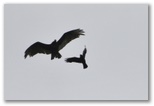
Crow diving on vulture
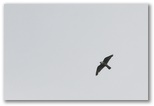
Peregrine over the house
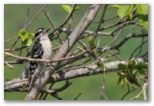
Downy Woodpecker
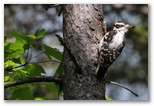
Hairy Woodpecker
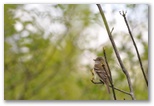
Alder Flycatcher
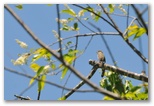
Least Flycatcher
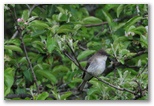
Eastern Phoebe
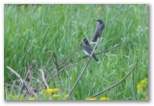
Eastern Kingbird
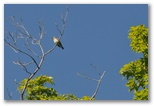
Red-eyed Vireo
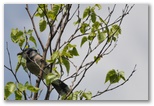
Blue Jay
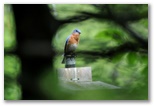
Eastern Bluebird

Hermit Thrush
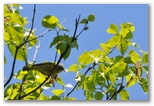
Nashville Warbler
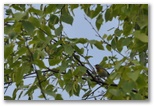
Northern Parula
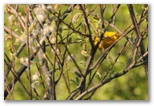
Yellow Warbler
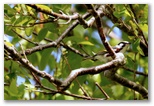
Chestnut-sided Warbler
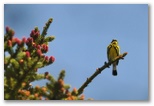
Magnolia Warbler
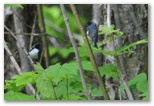
Black-throated Blue Warblers
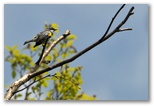
Yellow-rumped Warbler
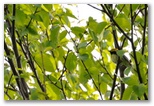
Black-throated Green Warbler
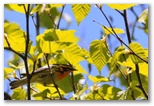
Blackburnian Warbler
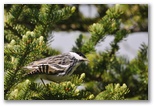
Blackpoll Warbler
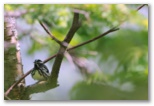
Black and White Warbler
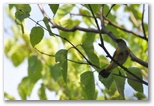
American Redstart
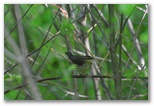
Northern Waterthrush
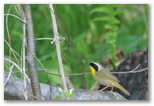
Common Yellowthroat
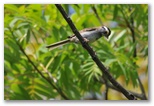
White-throated Sparrow
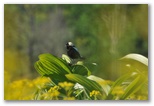
Bobolink
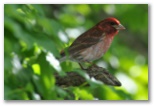
Purple Finch









